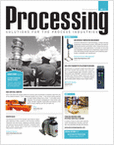Blog ini berisi file-file tentang kimia terutama kumpulan ebook atau handbook yang dapat di download secara gratis(100%FREE).Buat ade' teknik kimia dan teman2 seangkatan mudah-mudahan ini bermanfaat..
Kimia AnorganikBUKU TEKS KIMIA ANORGANIK ONLINE

Taro Saito,
diterjemahkan dari versi Bahasa Inggrisnya oleh Ismunandar
MUKI KAGAKU by Taro Saito
© 1996 by Taro Saito
Reproduced by permission of Iwanami Shoten, Publishers, Tokyo
Sesuai dengan kesepakatan dengan Iwamani Shoten, buku online ini, hanya diperbolehkan digunakan dalam bentuk file elektronik, digunakan hanya untuk tujuan pendidikan, untuk guru, siswa, dosen, dan mahasiswa sarjana dan pascasarjana. Tidak boleh didistribusikan dalam bentuk tercetak.
Download Seluruh bukuPengantar Kimia
© 2006 by Yashito Takeuchi
Reproduced by permission of Iwanami Shoten, Publishers, Tokyo
Sesuai dengan kesepakatan dengan Iwamani Shoten, buku online ini, hanya diperbolehkan digunakan dalam bentuk file elektronik, digunakan hanya untuk tujuan pendidikan, untuk guru, siswa, dosen, dan mahasiswa sarjana dan pascasarjana. Tidak boleh didistribusikan dalam bentuk tercetak.
Download Seluruh bukuKimia Analitik
Untuk Sekolah Menengah Kejuruan
Adam Wiryawan
Ririni Retnowati
Akhmad Sabarudin
Kimia Analitik merupakan salah satu cabang Ilmu Kimia yang mempelajari tentang pemisahan dan pengukuran unsur atau senyawa kimia. Dalam melakukan pemisahan atau pengukuran unsur atau senyawa kimia, memerlukan atau menggunakan metode analisis kimia. Kimia analitik mencakup kimia analisis kualitatif dan kimia analisis kuantitatif.
Download Seluruh BukuKimia KuantumBUKU TEKS KIMIA KUANTUM ONLINE

Koichi Ohno,
diterjemahkan dari versi Bahasa Inggrisnya oleh Bambang Prijamboedi
Quantum Chemistry by Koichi Ohno
© 2004 by Koichi Ohno
Reproduced by permission of Iwanami Shoten, Publishers, Tokyo
Sesuai dengan kesepakatan dengan Iwamani Shoten, buku online ini, hanya diperbolehkan digunakan dalam bentuk file elektronik, digunakan hanya untuk tujuan pendidikan, untuk guru, siswa, dosen, dan mahasiswa sarjana dan pascasarjana. Tidak boleh didistribusikan dalam bentuk tercetak.
Kimia kuantum seluruh buku (6.5 MB)KIMIA ORGANIK JILID 1
Stefanus Layli Prasojo, S.Farm., Apt.
Buku ini berisi enam bab, yaitu; Struktur dan Ikatan, Ikatan
Kovalen Polar: Asam-Basa, Alkana dan Sikloalkana, Alkena dan
Alkuna, Overview Reaksi Organik, dan Stereokimia. Buku ini disusun untuk memenuhi kebutuhan literatur berbahasa
Indonesia mengenai Kimia Organik untuk mahasiswa Farmasi.
Download Seluruh BukuTitrasi Dasar
Departemen Pendidikan Nasional
Buku ini terbagi dalam dua bagian, Bagian pertama membahas tentang titrasi secara umum sedangkan bagian dua membahas sebagian tentang titrasi asam basa.
Download Buku KeseluruhanPraktikum Kimia Organik 1
syabanisyah
buku ini adalah untuk mendukung pelaksanaan praktikum pengujian senyawa-senyawa kimia organik skala laboratorium secara kualitatif. Di dalam buku ini, dapat diperoleh beberapa cara pengujian secara sederhana untuk mengetahui keberadaan
senyawa organik
Download Keseluruhan BukuKUMPULAN NASKAH PRESENTASI PRAKTIKUM KIMIA ORGANIK.JPG)
Ebook ini merupakan kumpulan dari tugas presentasi Praktikum Kimia Organik yang dikerjakan oleh mahasiswa Akademi Teknologi Kulit Yogyakarta dan telah di diskusikan di Laboratorium Kimia. Tujuan pengumpulan ini untuk memudahkan mahasiswa maupun pihak lain yang ingin mempelajari kimia organik. Pada setiap akhir pembahasan disertakan referensi supaya pembaca dapat mempelajari lebih lanjut mengenai topik tersebut.
Download Keseluruhan BukuBuku Ajar Mikrobiologi
Fakultas Pertanian Yogyakarta
Download Keseluruhan BukuPerry's Chemical Engineer's HandbookSeventh Edition

Robert H. Perry
Editor
Don W. Green
Deane E. Ackers Professor of Chemical
and Petroleum Engineering,
University of Kansas
Associate Editor
James O. Maloney
Professor Emeritus of Chemical Engineering,
University of Kansas
Download Keseluruhan Buku(34.264 mb)kesetimbangan kimia
Penyusun : Drs. Harun Nasrudin, MS.
Editor : Drs. Sukarmin, MPd.
Dalam modul ini akan dipelajari secara garis besar akan dibahas penerapan hukum I termodinamika dalam kaitannya dengan reaksi kimia . Dan pembahasan lebih terfokus pada hubungan antara perubahan entalpi dengan jenis reaksi. Disamping itu juga dipelajari bagaimana menghitung perubahan entalpi suatu reaksi berdasarkan hukum Hess, data perubahan entalpi pembentukan standar, dan data energi ikatan
Download Keseluruhan BukuIkatan Kimia
Penyusun : Drs. Bambang Sugiarto, M. Pd.
Editor : Dra. Utiyah Azizah, MPd.
Dalam modul Ikatan Kimia ini akan dipelajari ikatan ion, ikatan kovalen, ikatan kovalen koordinasi, ikatan logam dan tata namasenyawa kimia.
Download Keseluruhan Buku

























.JPG)











